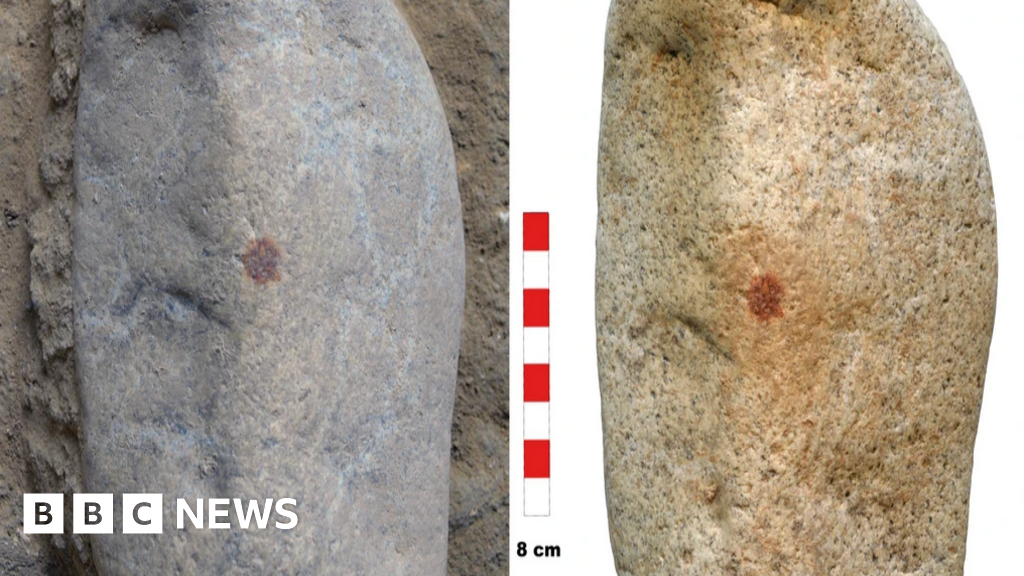
Researchers in Spain have made an intriguing discovery that may change our understanding of Neanderthals and their capacity for creativity. They unearthed the oldest known complete human fingerprint from a stone that appears to depict a face, hinting at the possibility that Neanderthals engaged in artistic expression about 43,000 years ago.
The stone was found in the San Lázaro rock shelter located in Segovia. It is believed a Neanderthal man used red pigment to create a nose-like mark on a pebble. This detail, strategically placed, has led scientists to theorize that Neanderthals were capable of symbolic thinking, a crucial aspect of artistic endeavor.
Co-author of the study, Prof. María de Andrés-Herrero, described the excitement of the find, which was made after years of excavation. Following extensive analysis, the team confirmed the presence of pigment and identified a male adult fingerprint on the stone.
While there are challenges in comparing these fingerprints to existing Neanderthal data, the researchers emphasize that this represents the earliest known instance of portable art in Europe, marking a pivotal moment in the discussion of Neanderthal behavior. The trace of red ochre indicates it was deliberately brought to the shelter, underscoring that this was not an accident but an intentional act of creation.
Published findings in the journal Archaeological and Anthropological Sciences depict this pebble as a significant visual symbol of early human creativity, potentially recontextualizing our understanding of Neanderthal life and their cognitive abilities.
Source: www.bbc.com






